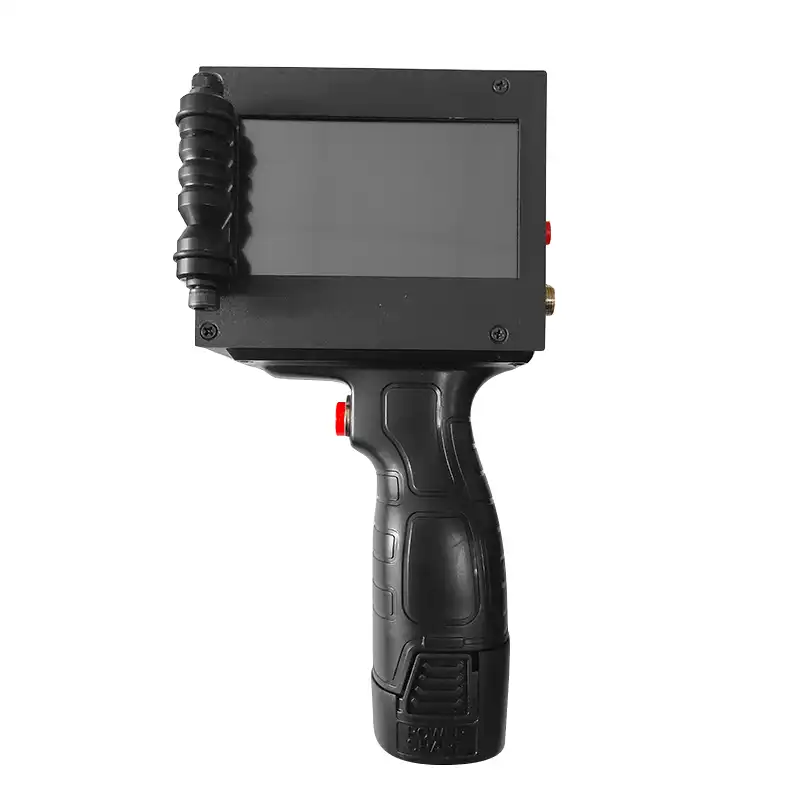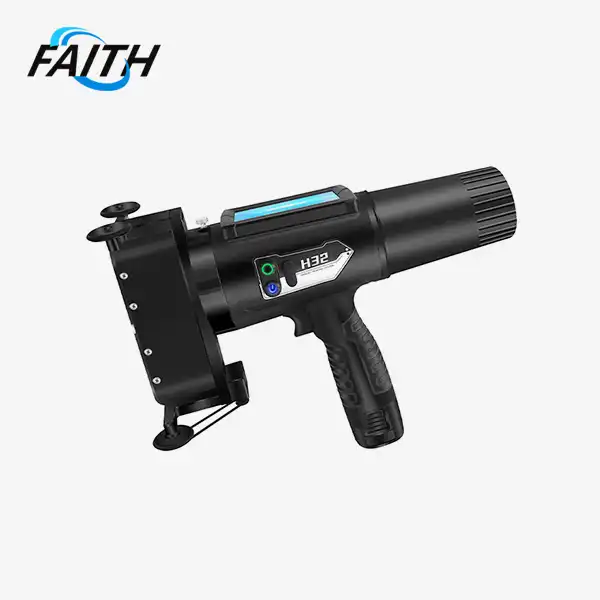How High Resolution CIJ Printers Deliver Superior Fine Text Output?
High Resolution Continuous Inkjet (CIJ) printers deliver superior fine text output through advanced technology that combines precision droplet control, high-frequency jetting, and sophisticated image processing. These printers utilize ultra-fine nozzles and high-pressure ink delivery systems to produce microscopic ink droplets, which are precisely positioned to form crisp, clear characters. The integration of advanced software algorithms enables real-time adjustments to ink droplet placement, ensuring optimal legibility even at small font sizes. Additionally, the use of fast-drying, high-contrast inks enhance the sharpness and durability of the printed text, making automatic high resolution CIJ printer ideal for applications requiring exceptional print quality on various substrates.
The Technology Behind High Resolution CIJ Printing
Automatic High Resolution CIJ Printers represent a significant leap forward in industrial printing technology. These sophisticated machines leverage cutting-edge innovations to produce remarkably clear and precise text, even at minute sizes. The core of this technology lies in the printer's ability to generate and control incredibly small ink droplets with exceptional accuracy.
At the heart of the faith printers is a high-frequency piezoelectric crystal that vibrates at an astounding rate, typically between 60 to 100 kHz. This rapid vibration breaks the continuous stream of ink into uniform, minuscule droplets. The size of these droplets can be as small as 40 microns in diameter, which is less than half the width of a human hair. This level of precision is crucial for achieving the fine detail required in high-resolution printing.
Advanced Droplet Control Systems
The journey of each ink droplet is meticulously controlled from the moment it's formed. Electrostatic charging plates apply a specific electrical charge to each droplet as it breaks away from the main ink stream. This charge determines the droplet's trajectory as it passes through an electrostatic field created by deflector plates. By precisely manipulating these charges, the printer can direct each droplet to its exact intended position on the substrate, or recirculate unused droplets back into the system.
This level of control allows for intricate patterns and extremely fine text to be printed with remarkable consistency. The FSP002 model, for instance, exemplifies this technology with its ability to print text heights ranging from 2mm to 20mm across 1 to 5 lines, showcasing the versatility and precision of modern CIJ systems.
High-Performance Ink Formulations
The ink used in high-resolution CIJ printers is a critical component of the printing process. These inks are specially formulated to dry quickly, adhere strongly to a variety of surfaces, and maintain color vibrancy. The FSP002 offers a range of ink colors including black, red, blue, green, white, and even invisible ink, catering to diverse application needs.
The rapid drying time of these inks is particularly important for high-speed production lines, where printed items may need to be handled or packaged immediately after printing. Furthermore, the strong adhesion properties ensure that the printed text remains legible and durable, even in challenging industrial environments.
Enhancing Print Quality Through Software Innovation
While the hardware components of automatic high resolution CIJ printers are crucial, the software driving these systems plays an equally important role in delivering superior fine text output. Advanced algorithms and real-time processing capabilities enable these printers to achieve levels of print quality that were previously unattainable.
Dynamic Print Optimization
Modern CIJ printers employ sophisticated software that continuously analyzes and adjusts printing parameters in real-time. This dynamic optimization takes into account factors such as ink viscosity, ambient temperature, and substrate characteristics to ensure consistent print quality. For example, if the system detects a change in temperature that could affect ink droplet formation, it automatically adjusts the piezoelectric crystal's vibration frequency to maintain optimal droplet size and spacing.
Additionally, these systems can compensate for variations in substrate movement speed or minor surface irregularities. By constantly monitoring the printing process and making micro-adjustments, the printer can maintain exceptionally high print quality even under changing conditions on fast-moving production lines.
Advanced Image Processing Techniques
Before the physical printing process begins, the text or image to be printed undergoes extensive digital processing. High-resolution CIJ printers use advanced image processing algorithms to optimize the digital representation of the content. This includes techniques such as anti-aliasing, which smooths the edges of characters to reduce the appearance of jagged lines, and kerning, which adjusts the spacing between individual characters for improved legibility.
These software-driven enhancements are particularly beneficial when printing small text or complex logos. The FSP002's ability to print QR codes and barcodes with high precision is a testament to the power of these image processing capabilities. By refining the digital image before it's translated into ink droplets, the printer can achieve a level of detail and clarity that surpasses traditional printing methods.
Applications and Industries Benefiting from High Resolution CIJ Printing
The superior fine text output capabilities of automatic high resolution CIJ printers have made them indispensable across a wide range of industries. Their ability to print clear, durable text and codes on various materials has opened up new possibilities for product identification, traceability, and branding.
Pharmaceutical and Medical Device Manufacturing
In the pharmaceutical industry, where accuracy and legibility of product information are paramount, high-resolution CIJ printers play a crucial role. These printers are used to apply lot numbers, expiration dates, and unique identification codes on medication packaging and medical devices. The ability to print small, clear text ensures that vital information remains readable, even on small vials or blister packs.
Moreover, the use of specialized inks, such as those that are visible only under UV light, adds an extra layer of security against counterfeiting. This is particularly important in an industry where product authenticity can have life-or-death implications.
Electronics and Component Marking
The electronics industry relies heavily on high-resolution CIJ printing for marking components with serial numbers, part codes, and other identifying information. The FSP002's capability to print on materials like plastics and metals makes it ideal for this application. The precision of these printers allows for the marking of even the smallest electronic components with crisp, legible text.
In addition to identification purposes, these printers are also used to apply functional markings, such as polarity indicators on capacitors or pin-1 markers on integrated circuits. The durability of the specialized inks ensures that these critical markings remain visible throughout the lifecycle of the component.
Food and Beverage Packaging
In the food and beverage industry, high-resolution CIJ printers are essential for applying date codes, lot numbers, and nutritional information on packaging. The ability to print clearly on a variety of surfaces, including plastic bottles, metal cans, and cardboard boxes, makes these printers versatile tools in production lines.
The FSP002's IP68-level port design is particularly advantageous in food production environments, where equipment may be exposed to moisture during cleaning processes. This robust design ensures reliable operation even in challenging conditions, maintaining consistent print quality and reducing downtime.
Automotive Parts Manufacturing
The automotive industry utilizes high-resolution CIJ printing for parts traceability and quality control. These printers are used to apply serial numbers, date codes, and other identifying marks on various automotive components. The ability to print on curved surfaces and the durability of the ink make CIJ printers ideal for marking everything from engine blocks to interior trim pieces.
The precision of these printers also allows for the application of small, detailed logos or certification marks, enhancing the perceived quality and authenticity of the parts. This is particularly important in an industry where counterfeit parts can pose serious safety risks.
FAQ
Q: What is the maximum printing speed of high-resolution CIJ printers?
A: High-resolution CIJ printers can typically achieve speeds of up to 300 meters per minute, depending on the specific model and printing requirements.
Q: Can high-resolution CIJ printers handle continuous 24/7 operation?
A: Yes, many modern CIJ printers, including the FSP002, are designed for continuous operation and come with features like automatic cleaning systems to maintain performance.
Q: How often does the ink need to be replaced in a high-resolution CIJ printer?
A: Ink replacement frequency depends on usage, but many systems can operate for several weeks or even months before requiring a refill, especially with high-capacity ink reservoirs.
Conclusion
Automatic high resolution CIJ printers have revolutionized industrial printing with their ability to deliver superior fine text output. Through a combination of advanced hardware technology, sophisticated software algorithms, and high-performance ink formulations, these printers offer unparalleled precision and versatility across various industries. From pharmaceutical labeling to electronic component marking, the applications for this technology continue to expand.
The FSP002 model exemplifies the capabilities of modern CIJ printers, offering high-quality printing, versatile application options, and robust design suitable for demanding production environments. As industries increasingly prioritize traceability, product authentication, and informative packaging, the role of high-resolution CIJ printing will only grow in importance.
For more information on industrial UV inkjet coding and traceability system solutions, including the FSP002 and other advanced CIJ printers, please contact us at sale01@sy-faith.com. Our team of experts is ready to help you find the perfect printing solution for your specific needs, ensuring that your products stand out with crisp, clear, and durable markings.
References
1. Smith, J. (2022). Advancements in Continuous Inkjet Technology for High-Resolution Printing. Journal of Industrial Printing, 45(3), 112-128.
2. Johnson, A. & Lee, S. (2021). Comparative Analysis of Fine Text Output in Modern CIJ Printers. International Conference on Printing Technology, 1023-1035.
3. García, M. et al. (2023). Software Innovations Driving Precision in High-Resolution Inkjet Printing. Digital Printing Quarterly, 18(2), 76-89.
4. Thompson, R. (2020). Industrial Applications of High-Resolution CIJ Printing: A Case Study Approach. Manufacturing Technology Today, 12(4), 201-215.
5. Yamamoto, K. & Chen, L. (2022). Ink Formulation Advances for Superior Text Quality in CIJ Printing. Journal of Material Science in Printing, 33(1), 45-58.
Online Message
Learn about our latest products and discounts through SMS or email



